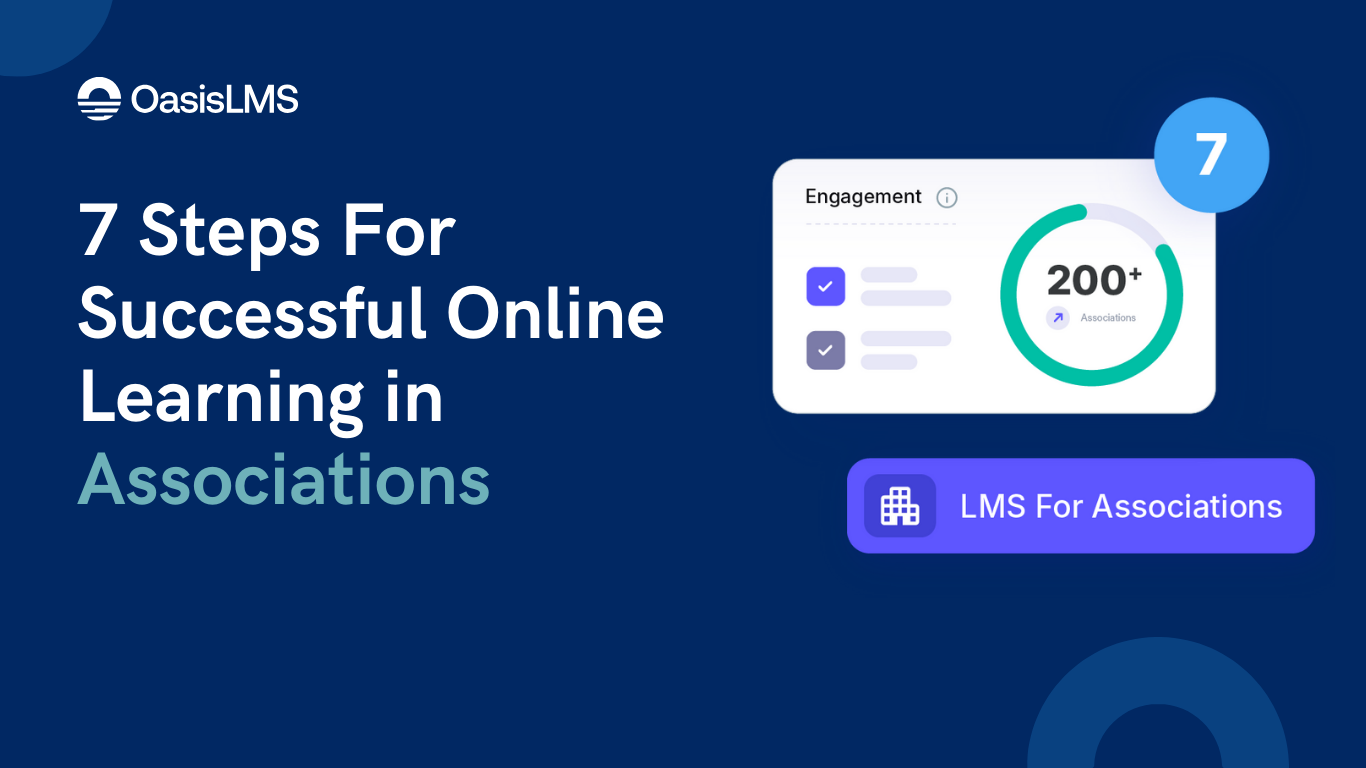
Since Covid, online learning isn’t exclusively for universities. Today, professional and trade associations are at the vanguard of offering high-quality, flexible, and engaging online content for both members and non-members. Whether you're offering Continuing Medical Education (CME), professional development, or any other type of continuing education, online learning can help your members grow and your association with it.
To be successful you have to make a plan. Effective online learning requires a careful strategy, the right tools, and an understanding of what your members actually want and need.
In this article, we’ll walk through 7 steps for successful online learning in associations, blending proven best practices with the unique needs of membership organizations.
Great online learning programs begin with clear learning objectives. But for associations, it's not just about content it’s also about delivering member value or turning non-members into members.
What are your members looking for? Are they interested in licensure, certification, or career advancement? Your learning goals should reflect those end goals. For example, a medical association might offer CME to help physicians meet MOC requirements, while a trade organization could offer courses tied to industry-specific credentials.
Use learning to strengthen your membership journey. Offer onboarding education for new members, advanced tracks for long-time professionals, and microlearning for lapsed learners.
Technology is often the backbone of a successful online learning experience—yet many associations still use systems built for academia or outdated webinar tools.
Look for features like:
· Integration with systems like PARS, CPE Monitor, or BCRS
· Automated credit tracking and certificate delivery
· Support for partial credit claiming (e.g., .25 CME increments)
· Mobile-friendly access for busy professionals
Your members are probably not technology experts. Create clear login instructions, guided walkthroughs, and automated reminders.
Your members juggle busy professional lives. The better your learning system supports flexibility, focus, and clarity, the higher the chances of member engagement.
In today’s world, people want to be on their own time. Let them take courses at their leisure with on-demand options.
Use in-platform calendars, course progress bars, and automated nudges to help learners stay on track without micromanaging them.
Associations have a powerful advantage: community. Use your associations built in network to foster peer to peer engagement.
Create space for members to ask questions, share ideas, and reflect on what they’re learning. This also increases perceived value of the program.
Pair learners with experienced members or offer cohort-based sessions to drive accountability and deeper engagement.
As Bill Gates said “Content is king”, but only if it’s good content for your members. Boring webinars and long PDFs may not work like they used to.
Bring in your industry’s thought leaders to present case-based, interactive learning sessions that mirror daily practice.
Mix webinars, microlearning modules, quizzes, video clips, and downloadable tools. Add interactivity like polls or knowledge checks to keep learners involved.
Professional learners need visibility into their achievements and administrators need to track results.
Give immediate access to certificates of completion or credits. If applicable, send credit reports directly to regulators like the ACCME, ANCC, or NAB.
Track which courses are performing best, where learners drop off, and who needs follow-up. Use this data to guide future offerings.
Online learning is not “set it and forget it.” The best associations use feedback and analytics to constantly evolve their programs.
Use evaluations to find out what’s positive and what challenges surround your content. Use this to improve your education.
Use analytics to identify gaps or underperforming modules. A/B test different delivery styles or presenters. Make improvements continuously—not just once a year.
Associations are uniquely positioned to be leaders in online education. You have years of built in trust, experience and an existing community of learners who are deeply invested in their professional development.
By following these seven steps, you can transform your online learning program into a true member benefit one that drives engagement, retention, and revenue.
Whether you're launching your first course or refining a mature education program, remember: online learning isn’t just a checkbox. It’s an opportunity to serve your members in powerful new ways.
Whether managing CME for physicians or supporting member growth, Oasis LMS helps deliver high-impact education efficiently and at scale.
